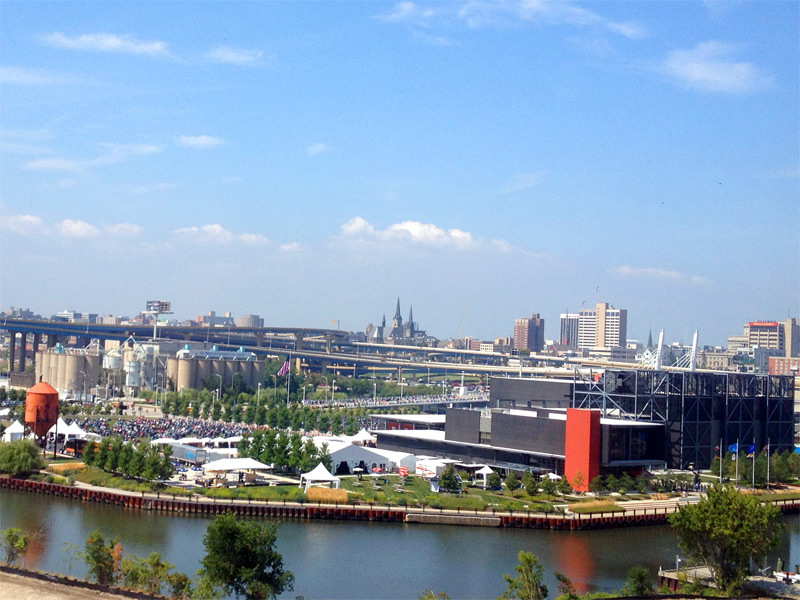In 1965, a young folk singer named Bob Dylan shocked the music world when he played the electric guitar live on stage for the first time instead of his traditional acoustic.
It was a brilliant and simple example of someone taking an artistic (and financial) risk by putting it all on the line and accepting the criticism that went with it. Let’s just say that Dylan’s timing was perfect and he’s had a pretty decent musical career since then.
Some 50 years later, the ultimate American gas and oil motorcycle company Harley-Davidson is trying to "go electric" with its Project Livewire motorcycle.
Unlike Dylan in ’65, Harley is moving slowly toward electricity in its traditional product as Livewire is currently a prototype non-production motorcycle. It likely will remain that way for some time as it’s being tested by riders at events in the U.S., Canada and Europe.
I had the chance to ride a prototype Livewire bike at the Milwaukee Rally at the Harley Museum earlier this month.
Before describing my ride and the bike, Harley management and engineers deserve credit for putting the Livewire out to the public as a prototype for customer input. Throughout its history, Harley closely guarded its new products and technologies before going public, so this is a big and smart move.
Harley might have learned some lessons from its V-Rod liquid-cooled motorcycle release in 2001, which hasn’t been as successful as expected over time. On the entertainment side, I recall a concert at a big anniversary party on the Lakefront in 2003 that could have used more customer feedback.
Getting back to the bike, Harley emphasizes look, sound and feel when it comes to products and the brand. The Livewire leads with feel as the bike handles extremely well with a low center of gravity that is comfortable and fun to ride. The brake tuning is on the tight side, but it was easy to adjust. Livewire maxes out at 95 mph and claims going 0-60 in four seconds, which I didn’t try on the short ride through the Valley from the Museum to Miller Park.
While Livewire doesn’t have the boastful and flashy look of a traditional Harley, you wouldn’t really expect that from an electric bike. Harley is smart not to dress a bike as something that it’s not. Weighing about 460 pounds, Liverwire looks more like a nice entry level sportbike than a racer or cruiser.
Dare I say that the Livewire look and ride somewhat reminded me of the now defunct Buell bikes (cue gasps from Harley and Buell enthusiasts). One design improvement this consumer recommends is making the mirrors more useful as I could barely see them under the handlebars.
The sound of the Livewire is definitely a work in progress. Motorcycle sound can be as subjective as music or art with hardcore riders. Unfortunately, I found the Livewire sound reminded me of a dentist drill or small yard saw. While the bright engineering minds at Harley (and there are plenty) tuned this sound from a normally silent electric bike, I suggest they fine tune it because the Livewire was not easy on my ears.
Livewire is much easier to ride than a traditional motorcycle since it has an automatic shift. You just twist the grip (and grab the brake) with your right hand and relax your left hand and foot. Since there is no gauge on the Livewire, the handlebar features adjustments for riding in the "range" or "power" mode designed to fit longer or shorter rides.
Just like electric cars, battery range is crucial to the success of electric motorcycles, which are already available from other manufacturers like Zero and Brammo, which was recently acquired by Harley competitor Polaris. BMW and KTM are testing the electric bike water carefully, much like Harley. The Livewire battery charge lasts about 3.5 hours. While we’re not sure how far that goes, estimates range from 50 miles on up, which really restricts the bike to shorter, city type riding.
Harley has set no timetable on possible production or pricing of its electric bike, so it will be interesting to watch. While the Livewire had appeared in an Avengers movie, it takes more than slick promotion and advertising to sell to this slice of the motorcycle market, especially at a high cost.
Finally, a quick note of thanks to the on-site Harley staff for their accommodating assistance with scheduling my ride after issues with the clunky on-line registration. As usual, people top technology when it comes to customer service.
Wisconsin Harley falls to the dogs: Besides the fall colors, nothing goes together as well with motorcycles than small dogs, especially Dachshunds. On Saturday, Oct. 10, Wisconsin Harley-Davidson in Oconomowoc holds its second annual Wiener Dog Derby during its Oktoberfest Open House from 11 a.m. to 4 p.m. Besides the dog derby benefiting local dog rescues, festivities include food, beverages, prizes and live polka music from the Steve Meisner Band.
Mike Morgan rides retro, whether on his 1976 Harley Aermacchi 250 or Heritage Softail. Mike has been a motorcyclist since 2001 having ridden in Sturgis, Daytona Beach, the California coast, New England and everywhere in between, including in the last three Milwaukee Harley Anniversary parades.
Mike worked in communications and marketing at Harley-Davidson for more than 12 years, writing and editing all kinds of content, including award-winning media kids in 2009 and 2012. He had ridden the Harley several times before Brewer games at Miller Park, and ran in one of the last sausage races at the old County Stadium when he was Communications Manager for the Stadium District Board.







